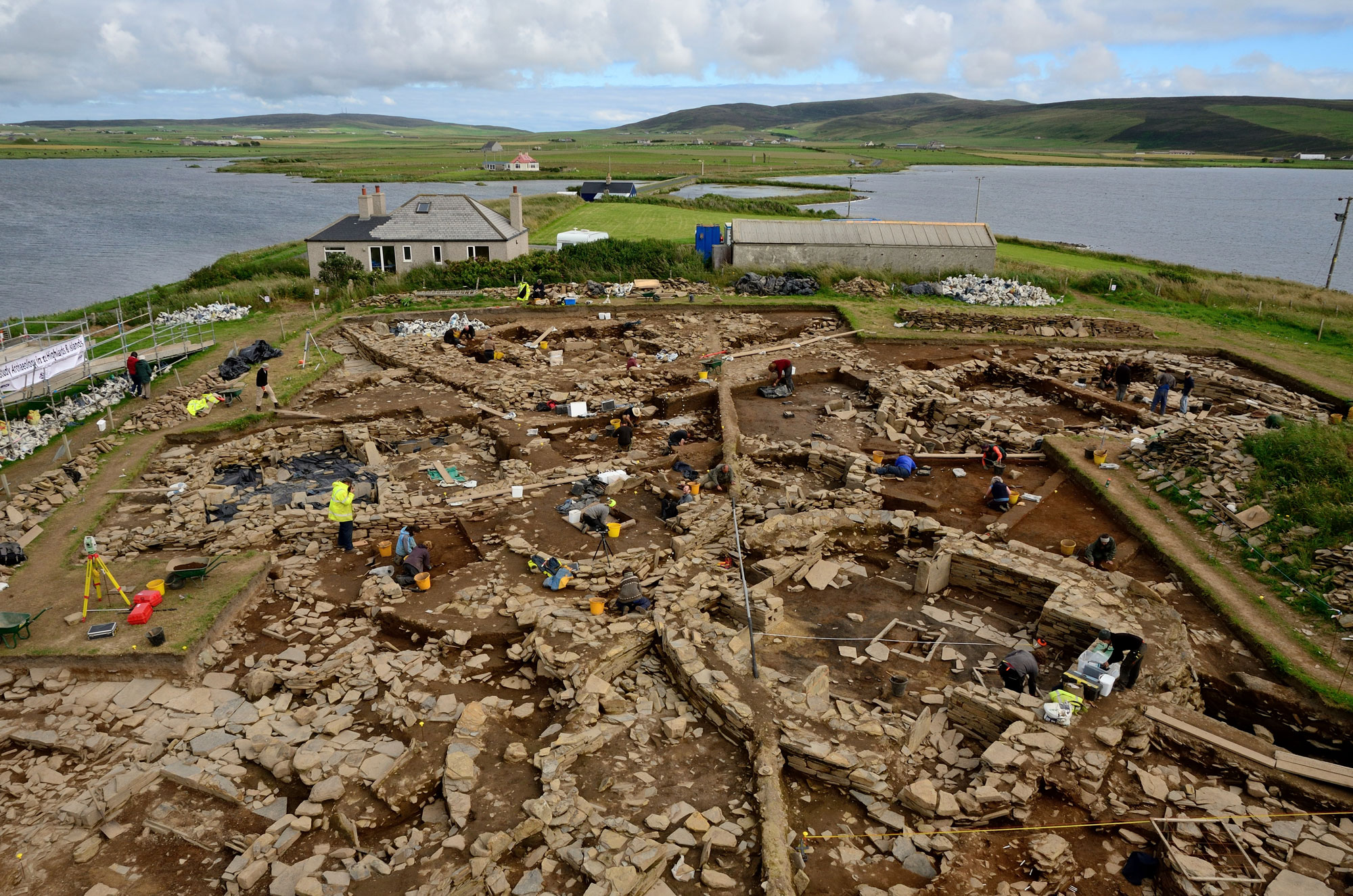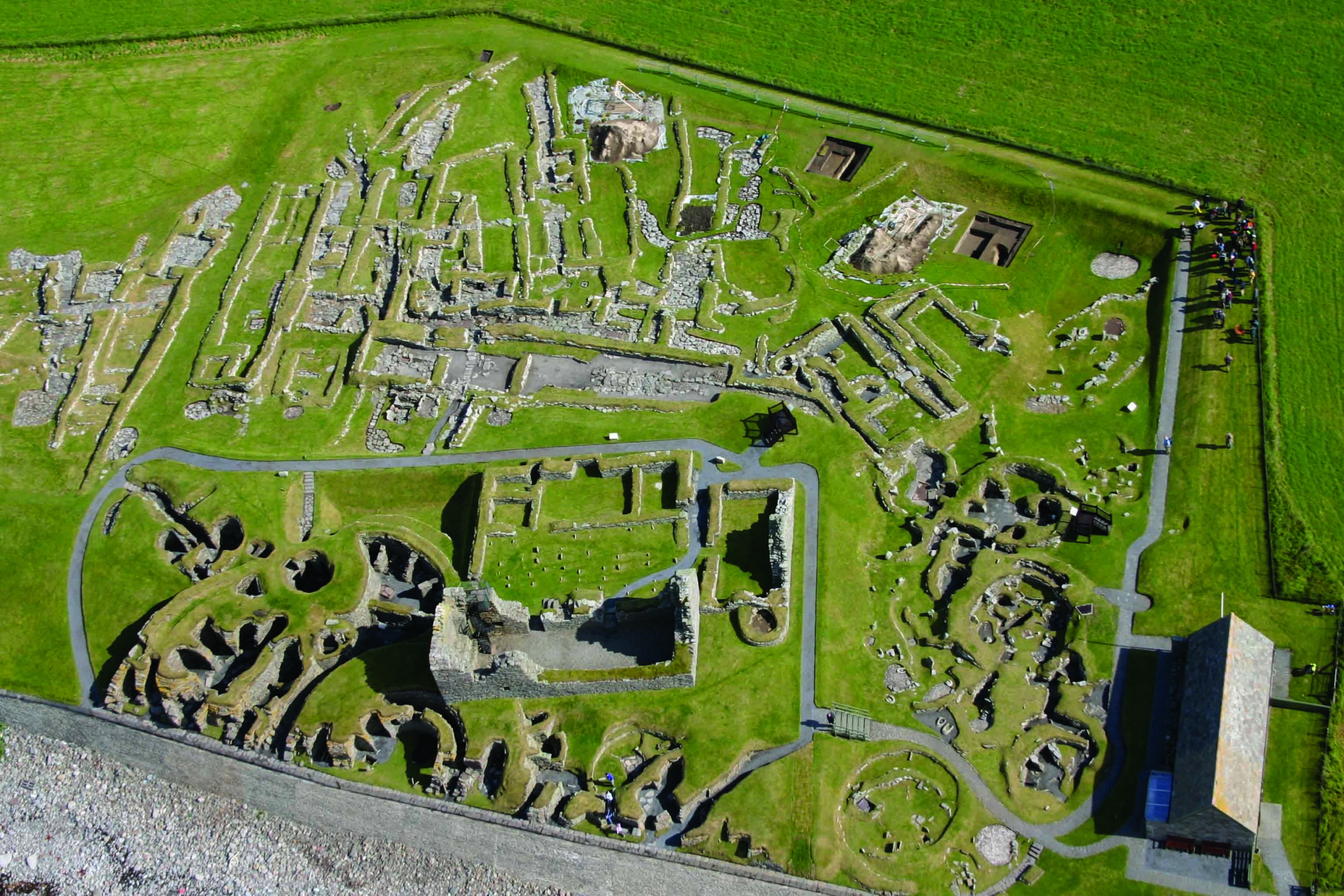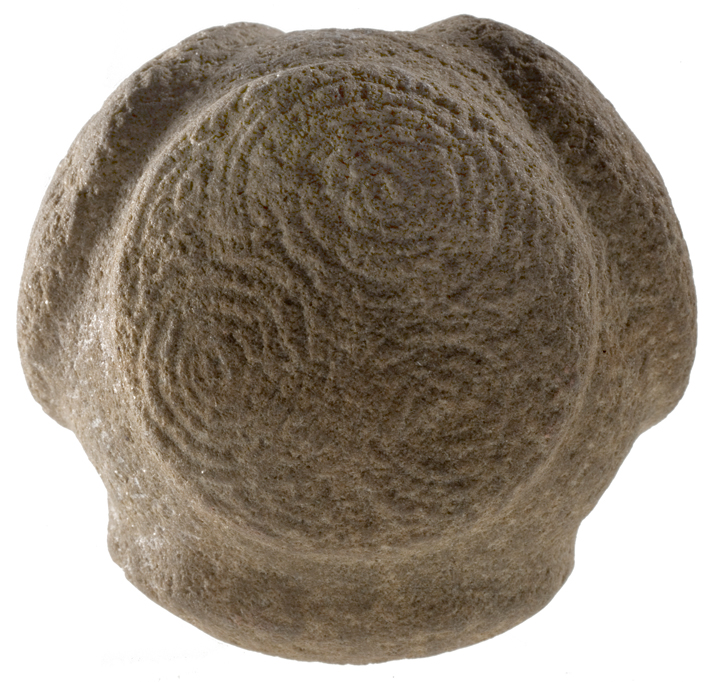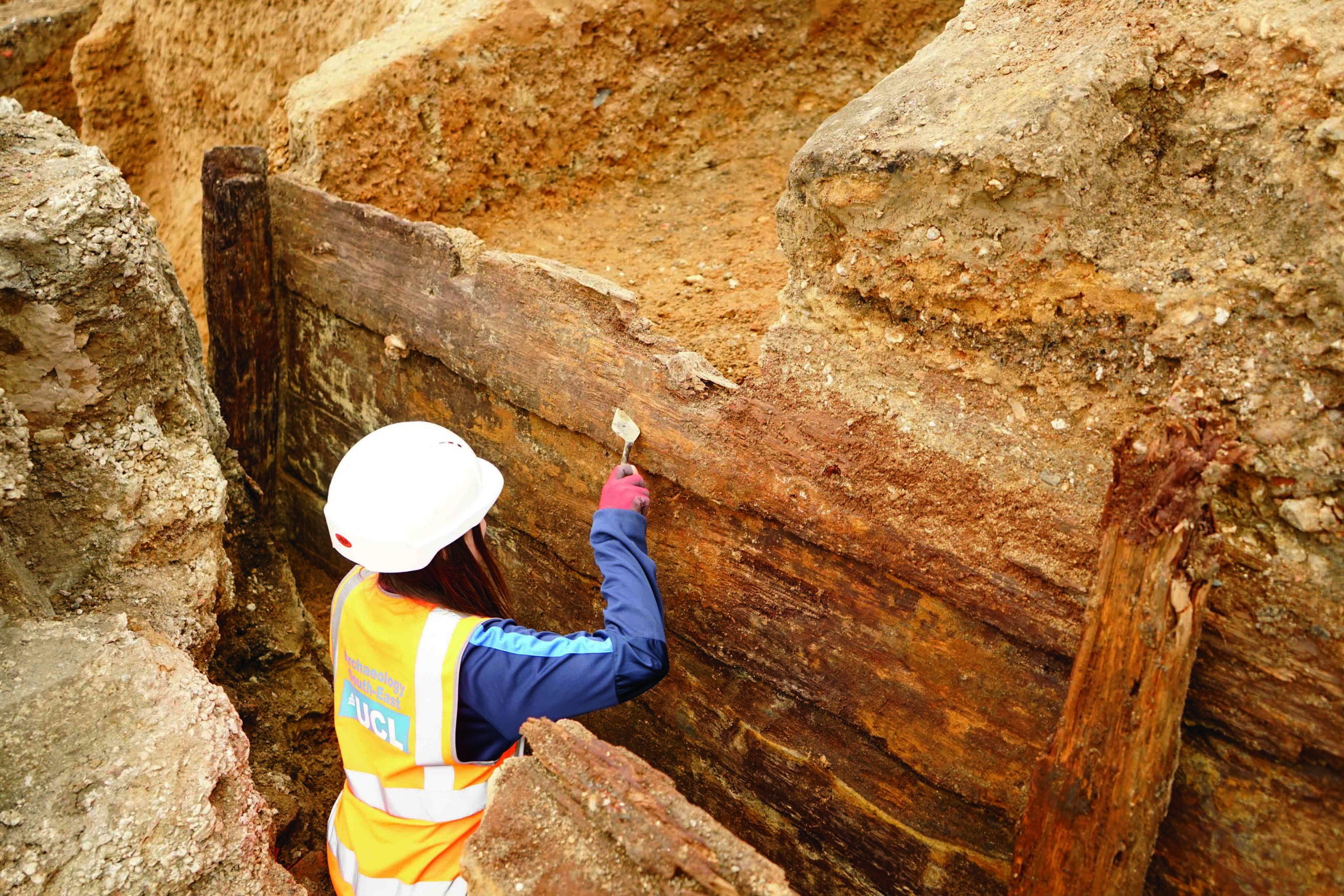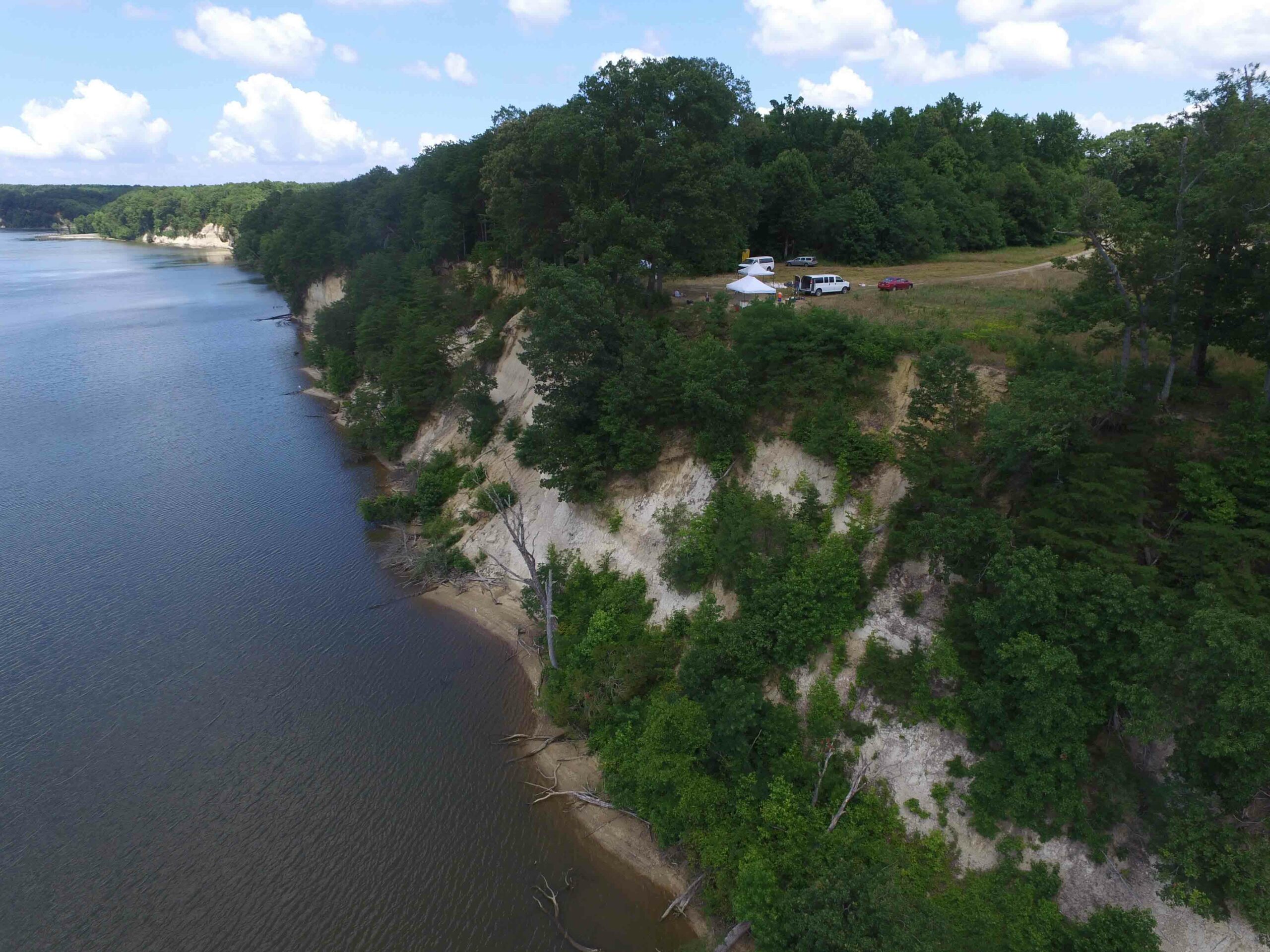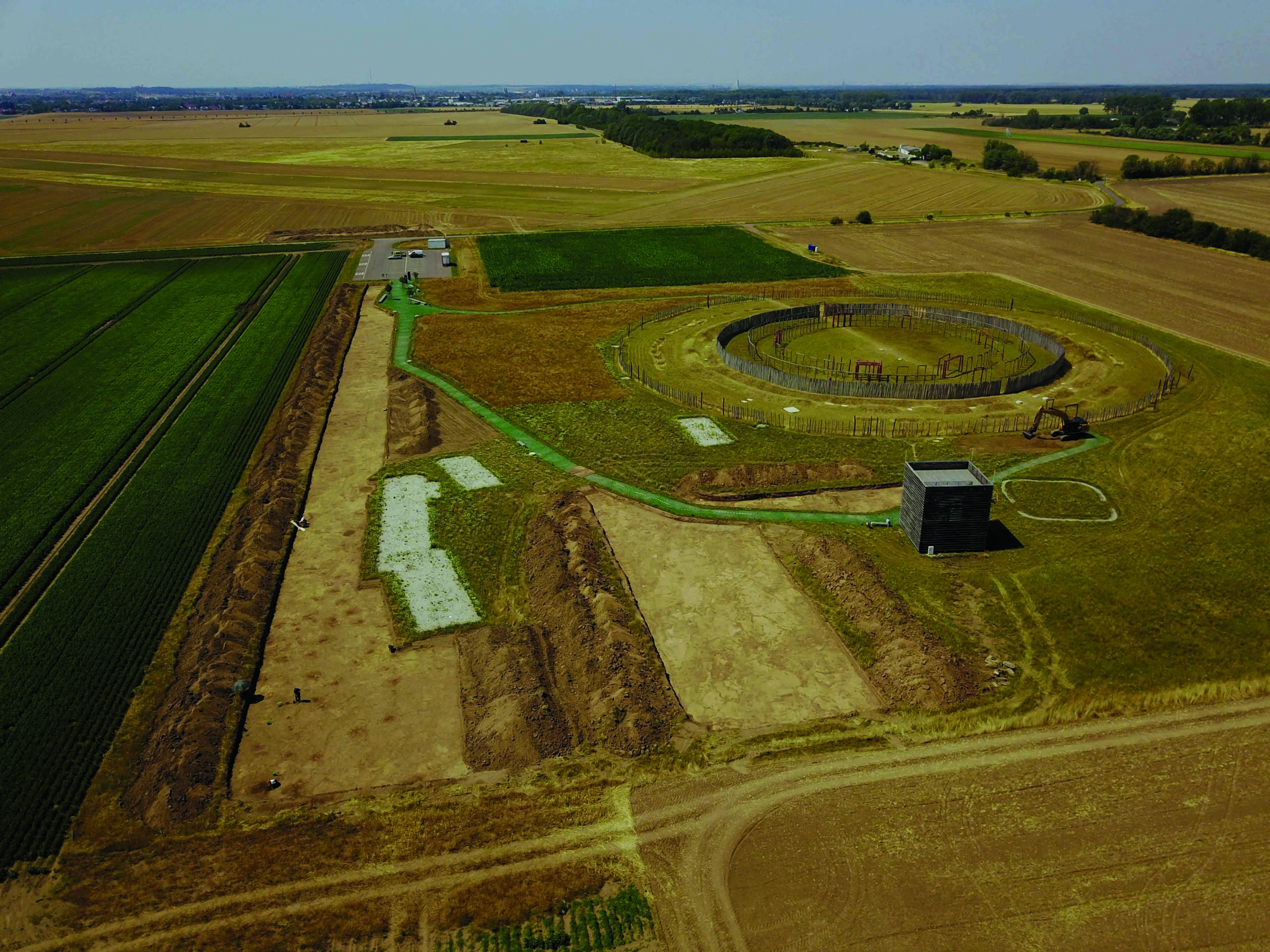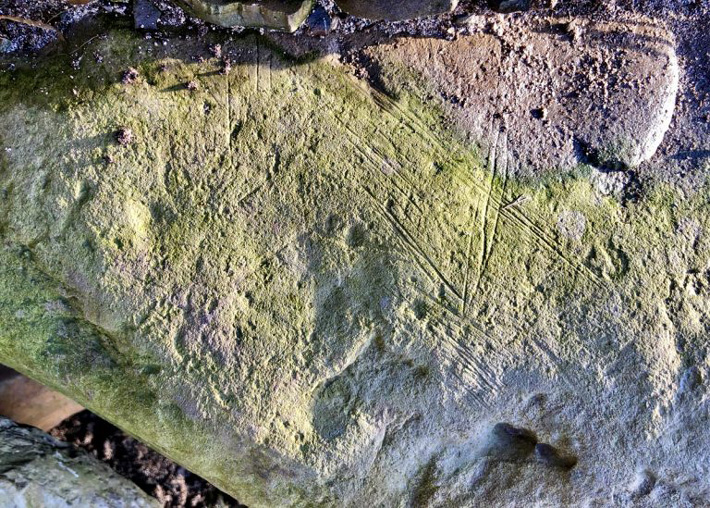
INVERNESS, SCOTLAND—The Scotsman reports that erosion on the island of Orkney at the northern end of the Bay of Skaill has exposed deer antlers, a boar tooth, a cattle jawbone, and a large stone marked with incised triangles and a series of rectangular bands. The artifacts were found about a half-mile away from the site of the Neolithic village of Skara Brae, which is located at the bay’s southern end. Sigurd Towrie of the University of the Highlands and Islands Archaeology Institute said the artifacts could mark the presence of another village dating back some 4,000 to 5,000 years. “If this is the case, and based on the scale of the eroded section, we may well be looking at a Neolithic/Bronze Age site on a par with Skara Brae—albeit one that is now disappearing at an alarming rate,” he explained. Towrie and his colleagues will continue to monitor the site. To read about a ceremonial center on the Orkney archipelago, go to "Neolithic Europe's Remote Heart."


